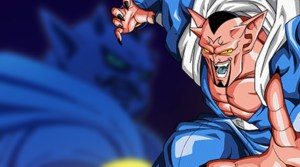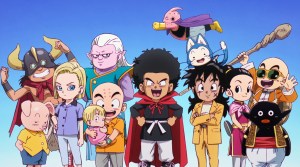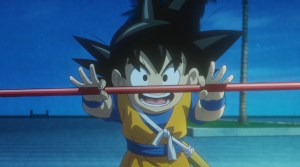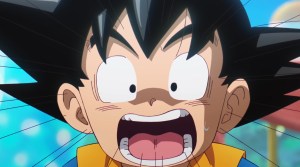It’s a wild time to be a Dragon Ball fan. The late Akira Toriyama’s Dragon Ball first hit the pages of Shueisha’s Weekly Shonen Jump magazine in 1984, and Shueisha is now in the midst of celebrating the milestone 40th anniversary for the franchise. It’s kicking things off in rather notable way with not only the premiere of a brand new anime series, Dragon Ball Daima, but with a brand new video game title, Dragon Ball: Sparking! Zero, releasing on the very same day. Both of these new projects releasing in tandem is no coincidence either as both are notable new steps forward for their respective mediums, but also a celebration of what has come before.
Dragon Ball: Sparking! Zero is cumilatively both a brand new experience for Dragon Ball fans, but one that will also feel incredibly familiar to anyone who has played a Dragon Ball game in the last 20 years. Like many of the characters that fans can choose within it, Sparking! Zero is a fusion of the past and present to offer a new experience that’s going to have a bright future. It at times feels like the version of Budokai Tenkaichi that we all thought we were playing on the PlayStation 2 back then, while still feeling like it’s gotten much needed improvements that elevate it over its spiritual successors like Dragon Ball Xenoverse. It’s the Dragon Ball game you’ve been dreaming about for years.
Videos by ComicBook.com
Dragon Ball: Sparking! Zero is a new entry in the long running, but previously defunct Budokai Tenkaichi franchise. With the last entry releasing back in 2010 with Dragon Ball Z: Tenkaichi Tag Team for the PlayStation Portable, there have been many games released since that have tried to capture the same spirit. For some reason, Dragon Ball had a lot of issues when it came to jumping from the PlayStation 2 to PlayStation 3 eras. Multiple titles were released that tried to emulate the Budokai Tenkaichi series to increasingly worse effect, and it wasn’t until Dragon Ball Xenoverse introduced its own take on it that it felt like fans were finally getting to play something that scratched that Budokai Tenkaichi itch.
For anyone who was still worried as to otherwise, Sparking! Zero is a full return to the Budokai Tenkaichi gaming experience. It’s title may have changed to better reflect it being a brand new start (and to reflect the original Sparking! title of the franchise in Japan), but it’s a sequel. That means it’s got all of the appealing things fans loved about those first three titles, but also there are some of the same nitpicks that can be made about it as well. It’s a franchise that has always believed in providing the best experience possible for Dragon Ball fans even if it was at the expense of being a balanced fighter.

What Is Dragon Ball: Sparking Zero?
Sparking! Zero is an arena fighter that sees the matches expand to a very wide area. Flying around is freely possible and is much faster than it ever has been in the series before. There are additional movements mechanics included that make for better quality of life in general too. There’s an extra dash step that makes closing in quicker, and the powered up ki dash can help you cross distances quickly. Up-close fights are frenetic, and there are deeper abilities that allow you to guard, dodge and parry hits at the right time. If you and your opponent are using the full extent of these additional mechanics it’s basically the closest we’ll get to recreating Dragon Ball’s fights as we ever will.
For example, one of the biggest quality of life improvements for the fights themselves is the Skill Count meter. This is an additional meter alongside your Ki and Health bars that either gradually fills up over time, or builds as you land hits. Having a Skill Point will either allow you to use skills that buff your stats (or specialty skills like the Solar Flare), or allow you to charge your Ki beyond its maximum amount to enter a special mode that allows you to use your super attacks. It never feels like this meter takes long to charge, but it also helps to limit spamming the strongest super techniques. There’s still a bit of a spamming issue built in, however, as while in your fully charged mode, you could fire a regular Kamehameha Wave then follow with a Super Kamehameha in the same combo chain. That’s also the inherent flaw of having such a wide space for the matches as players could be tempted to just cheese it by firing energy beams back and forth instead of dashing in for hand to hand combat.
Either way you decide to play, matches are also decided quickly. It’s very easy to just run back matches as soon as they’re over because they can end so quickly. You can choose to make them longer with Team Battles which let you take up to five fighters into a match (and swap out with them after a certain time). Battles feel fresh due to the number of options there are to take down your opponent, so when you add in additional layers on top with transformations it goes to a whole new level of fun in the fights. The only issue with the gameplay itself is one that won’t bother Dragon Ball fans: it’s not the most balanced fighter on the market.
Eschewing the traditional fighting game mindset, Sparking! Zero instead allows the strong characters to be openly stronger than the weaker ones. Characters you expect to deal lots of damage and have more health indeed do. Mastered Ultra Instinct Goku is going to be much stronger than early Dragon Ball Z Goku, and godly compared to the generic Frieza Soldier. This is in service of adhering to the Dragon Ball canon, and for many goes that extra mile that allows fans to truly play out their Dragon Ball fantasies. It’s still not an impossible gap to cover if you have the skill, however. Using Mr. Satan to defeat Jiren (Full Power) is still doable; it’s just going to take some time while playing perfectly. This decision makes sense when accounting for the 182-character roster at launch.
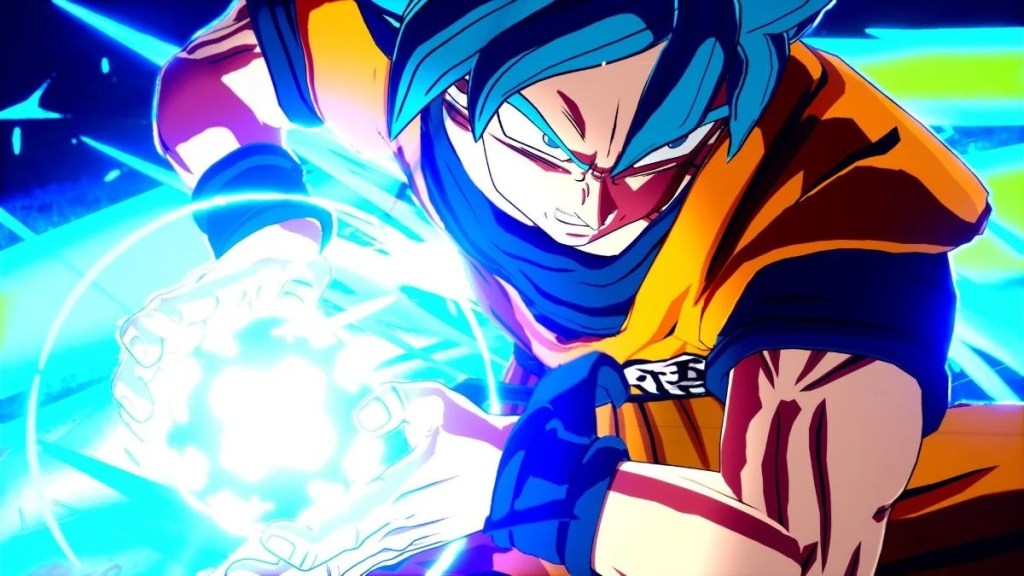
For Dragon Ball Fans, By Dragon Ball Fans
Character selection still somehow isn’t going to please everyone. There is a lack of classic Dragon Ball representation, but this is also the first game in the series that includes canonical materials from Dragon Ball Z: Battle of Gods and beyond. It’s a wider net being cast, and the characters selected at least all feel like they offer something different. There’s a distinct lack of generic shared specials and rush attacks, and while characters can all move around the arenas at the same kind of pace, slower characters are a bit slower and speedier characters are a bit faster. Balance is lost in favor of this massive roster maintaining its canon adherence and size, so mileage will vary in how you respond to that.
Speaking of fan service, there’s no better example of this than everything that has been included in the single player content. Before even jumping online to test your skills against others (or split screen fighting in the Hyperbolic Time Chamber stage), the story modes included this time are Episode and Custom Battle. Episode Battle focuses on eight different fighter’s paths throughout the story depending on when they take part. For example, Goku’s goes on for longer because it ranges from the Saiyan Arc to the end of the Tournament of Power in Dragon Ball Super. But Jiren’s will only showcase his time in the Tournament of Power. And depending on how well you do in some matches, your Episode Battle experience can change drastically.
There are certain “What If?” paths you take go down by either making a choice, or fulfilling a secret battle requirement. And these parallel universe branches can range from insignificant to changing the story entirely. For example, you can fight Raditz without Piccolo’s help and get help from Krillin instead. This seems like a small detail, but then you’ll see through some other events that go down that Goku survives the final blow. It changes how the rest of the Saiyan arc evolves from that point. Because if Goku doesn’t die in the fight against Raditz, he never learns the Kaioken or Spirit Bomb. Thus this story then shows what it could look like if Goku was around for the fights against the other Saiyans without those techniques.

Tons of Surprises in Store
That’s a small example of the unique ways the stories can go, and there are some truly excellent surprises in store with special “Sparking! Episode” cutscenes that play out some of the big “What If?” scenes. You can also make your own with Custom Battle, and the level of detail in what you can edit is quite surprising. You can make your own episode of the anime including episode title backgrounds, music, and even why characters might be fighting. This is going to be the mode fans are likely going to dive into the longest, and especially so when everyone’s uploading their own custom fights.
Finally, Dragon Ball: Sparking! Zero is just pure eye candy. Funny enough, this seems like this needs the least time spent on it of all the subjects as one look can tell you that Dragon Ball! Sparking Zero has a visual fidelity that gets as close to the anime as you might hope. Particle effects, explosions, dashing around, quick teleports, beams and more just look fantastic. There can be a bit of a stutter when things are going a bit too wild (and the arena itself is breaking apart), but it’s not very common as it was rarely seen in the hundreds of matches I had in the time with the game. You’re going to see lots of Supers thrown around, so luckily, it all looks incredible doing so.
Dragon Ball: Sparking! Zero is the Budokai Tenkaichi 4 fans have been waiting to get for a long, long time, but it’s also the perfect first entry to jump into if you’ve never played a game in this series. It’s a great first impression, and even better reunion. You’ve been waiting for a Dragon Ball game like this.
Rating: 5 out of 5
Dragon Ball: Sparking! Zero releases on October 11th (October 7th for those with early access) on PlayStation 5, Xbox Series X/S, and PC. A code was provided by the publisher for the purpose of this review, and was reviewed on a PlayStation 5.


